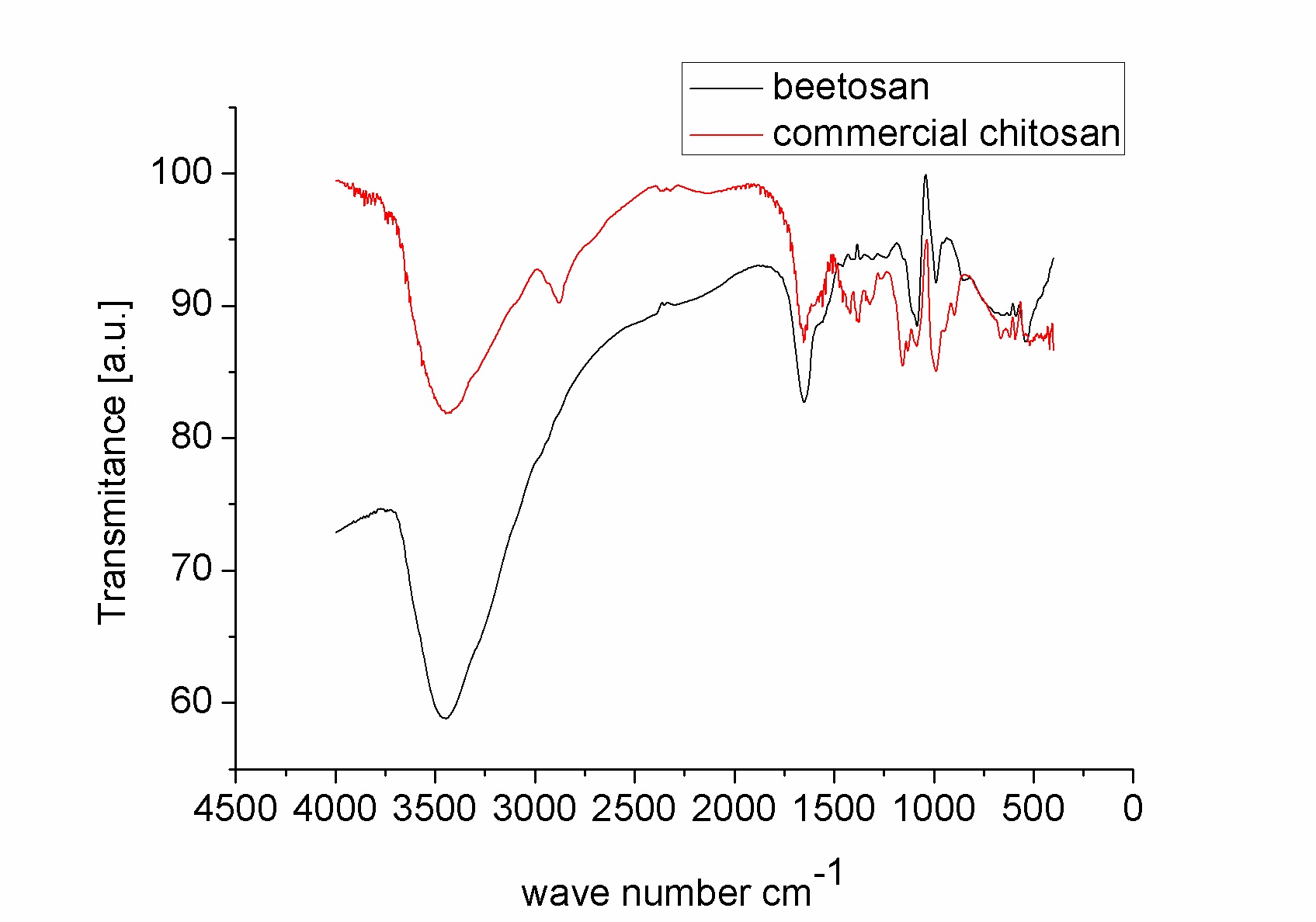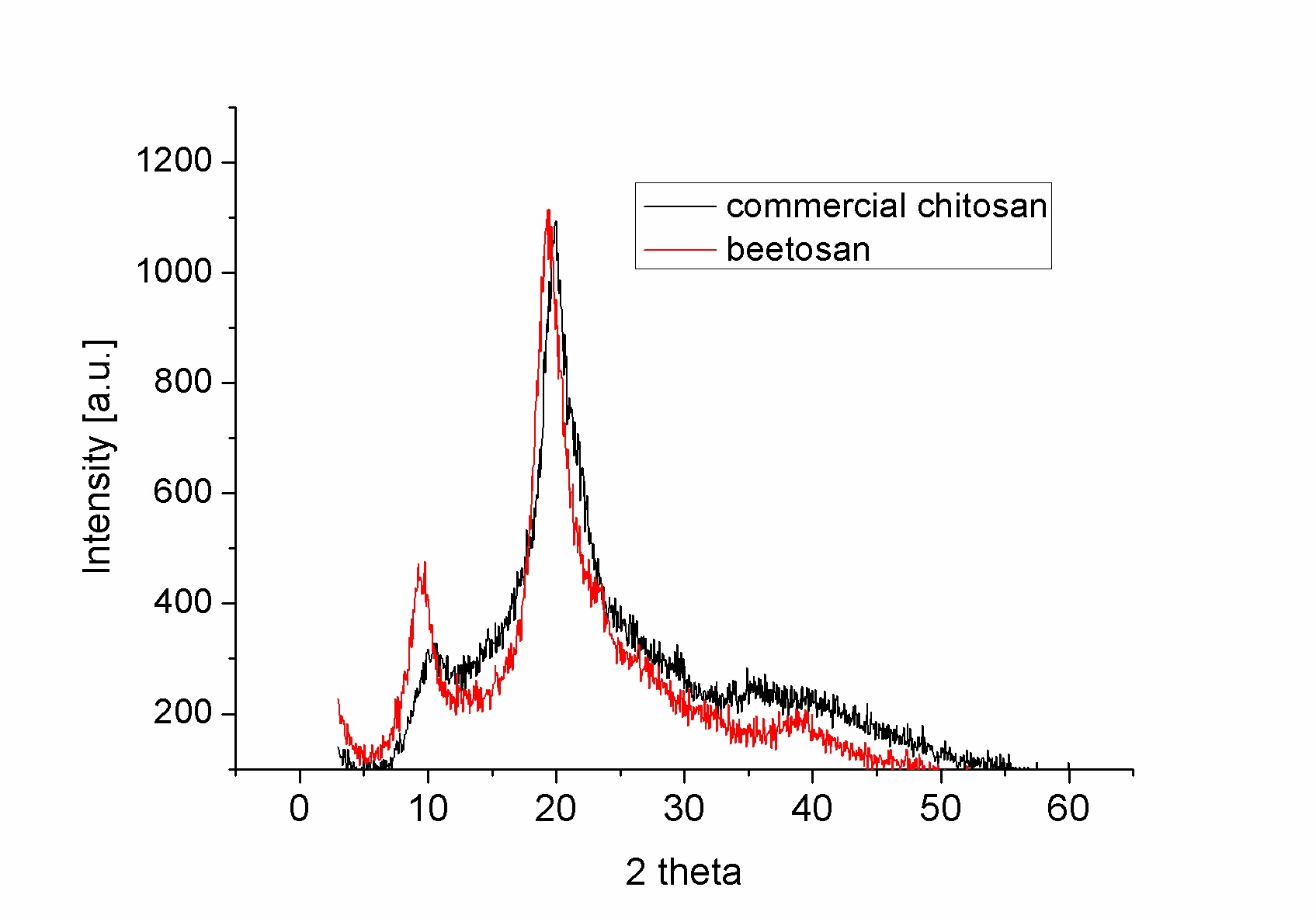Chitin is the second most abundant polysaccharide, next to cellulose. Currently, chitin is isolated mainly from main source marine invertebrates like crab, krill, shrimp, lobster and fungi. Alternatively, chitosan can be extracted from naturally died honeybees after wintering. Innovativeness of performed synthesis of active hydrogel matrices was application of beetosan derived from multistage purification of naturally died honeybees.
Structure of extracted beetosan was evaluated by means of FT-IR (see Figure 1) and XRD diffractometry (Figure 2).

Figure 1. FT-IR spectra of Beetosan and commercial chitosan.

Fig. 2 XRD diffractograms of Beetosan and commercial chitosan.
Synthesis of chitosan based hydrogels was performed applying UV light, PEGDA (700) as cross linking agent and 2-hydroxy-2-methylpropiophenone as photoinitiator. Prior to exposure to UV light, the mixtures of chitosan and beetosan were modified with addition of Aloe vera juice (5-35% wt), which allowed to receive hydrogel materials with enhanced therapeutic activity. Interestingly, Aloe vera juice is commonly determined as "natural therapeutics" and possesses wide spectrum of biomedical applications. Due to the presence of variable active substances with significant pharmacological activity, Aloe vera juice possesses valuable antibacterial, antioxidant, antifungal, antiseptic, antiviral and immunological properties. Moreover, due to antibacterial and antiseptic activity and ability to simulate growth of fibroblasts, Aloe vera juice constitutes an promising component of hydrogel matrices that can be applied to form active wound dressings[1]-[3]. The received hydrogel matrices that contain the Aloe vera juice were physicochemically analyzed by means of FT-IR. The influence of added Aloe vera juice on the three dimensional structure and surface morphology of received hydrogels was evaluated applying SEM. In addition, the swelling degree in water and solutions of salts with variable pH and the incubation studies in both distilled water and simulated body fluids were evaluated. In addition, the release of active substances form hydrogel matrix was performed in phosphate buffer saline at pH equal 7.4 and 4.0.
The authors would like to thank the The National Centre for Research and Development (Grant no: LIDER/033/697/L-5/13/NCBR/2014) for providing financial support to this project
References:
[1] Urvashi Nandal, Raju Lal Bhardwaj, International Research Journal of Plant Science (ISSN: 2141-5447) Vol. 3(3) pp. 038-046, March, 2012.
[2] Rabe T, Staden J Van (1997). Antibacterial activity of South African plants used for medicinal purposes. J. of Ethnopharmac. 56: 81-87.
[3] Joseph B, Justin Raj S (2010). Pharmacognostic and phytochemical properties of Aloe vera Linn. - An overview. Int. J. of Pharma. Sci.Review and Res. 2:106-110.